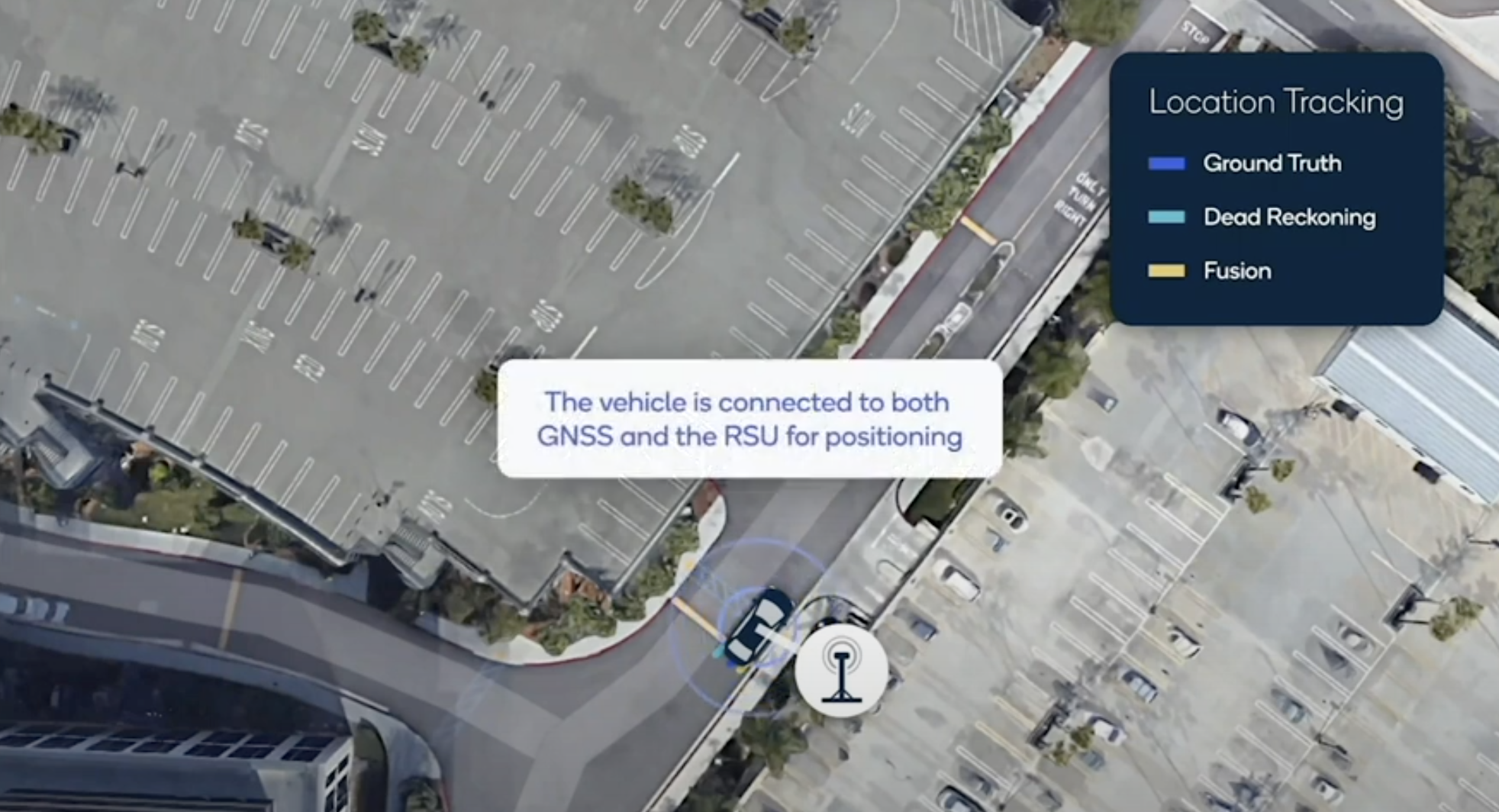Qualcomm sees the combo of cooperative radar sensing, C-V2X sidelink positioning and smart RSUs as key to improving road safety
As part of its commitment to intelligent transportation systems, Qualcomm’s R&D team demonstrated 5G connectivity, C-V2X ranging and positioning, and smart RSUs at the company’s Sorrento Valley campus in Southern California. Three key technologies highlighted – cloud-connected cooperative radar sensing, C-V2X sidelink positioning and AI enhanced RSUs – can help establish better coordination and communication between transportation system components, which Qualcomm’s Principal Engineer and Manager Shailesh Patil told RCR Wireless News will result in safer roads and enhanced autonomous driving experiences.
Already used in several models of vehicles, radar sensors — conversion devices that transform microwave echo signals into electrical signals — use wireless sensing technology to detect an object’s location, velocity, and other characteristics. These sensors aid in autonomous driving by conveying critical information about a vehicle’s relative speed and position to the ego vehicle.
However, because these radars all use the same spectrum, their rising numbers is causing a notable increase in radar interference, jeopardizing their effectiveness. To address this emerging interference challenge, Qualcomm is exploring how cloud-connected radar coordination can mitigate radar interference.
“You can allow the edge cloud to take the information about the radars, do some intelligent post processing and compute a new set of parameters or configurations that can allow the radars to cooperate,” said Patil, adding that this process reduces radar interference considerably.
“What we show in our demo is if you do cooperative sensing, then the range that the radar can detect is much longer,” he continued.
In addition, Qualcomm demonstrated how cellular sidelink positioning – with a single RSU – could contribute to autonomous driving by providing an additional positioning modality for vehicles in GNSS compromised areas.
Cellular systems are traditionally designed so that a phone or device connects to a base station, which then talks back to the device. However, because safety is a key element of C-V2X, or vehicle-to-everything communication, it’s critical that vehicles and other devices in a smart transportation system communicate directly to each other in a constant, self-organizing and distributed manner that is independent of a coverage system.
“The idea [of sidelink positioning] is device-to-device ranging [that] happen[s] directly without going through the gNodeB,” said Patil. “Instead of just ranging to the gNodeB in the system, you can range to any other device in the system – like an RSU.”
He added that this direct link is key for automotive positioning because roadside units (RSUs) can be strategically installed, so that they can range to the vehicle, ensuring continuous communication, even in challenging environments, such as inside tunnels, parking structures and dense urban areas. In fact, Qualcomm’s demonstration showed that when C-V2X positioning technology is used in a vehicle with sensors and a single RSU, the positioning error improves significantly compared to GNSS.
Finally, adding AI capabilities – like object detection and determining their speeds – to RSUs can aid drivers negotiate challenging intersections where driver visibility (including the cameras on the car) can be severely occluded. RSUs equipped with cameras and AI can broadcast timely messages to vehicles equipped with C-V2X capabilities, communicating to them when it is safe to make turns. Such capabilities also enable the network effect where smart RSUs play a proxy of C-V2X functionality for the vehicles and objects that they detect which themselves might not have C-V2X capability. Such functionality will be critical in initial C-V2X rollouts.
For Qualcomm, these demos prove that when supported by 5G, C-V2X and AI, radar sensing, sidelink positioning and smart RSUs are three powerful technologies that can enhance the future of safe and intelligent autonomous driving.
For a deeper look at all of Qualcomm’s MWC22 demos, visit this resource hub.

